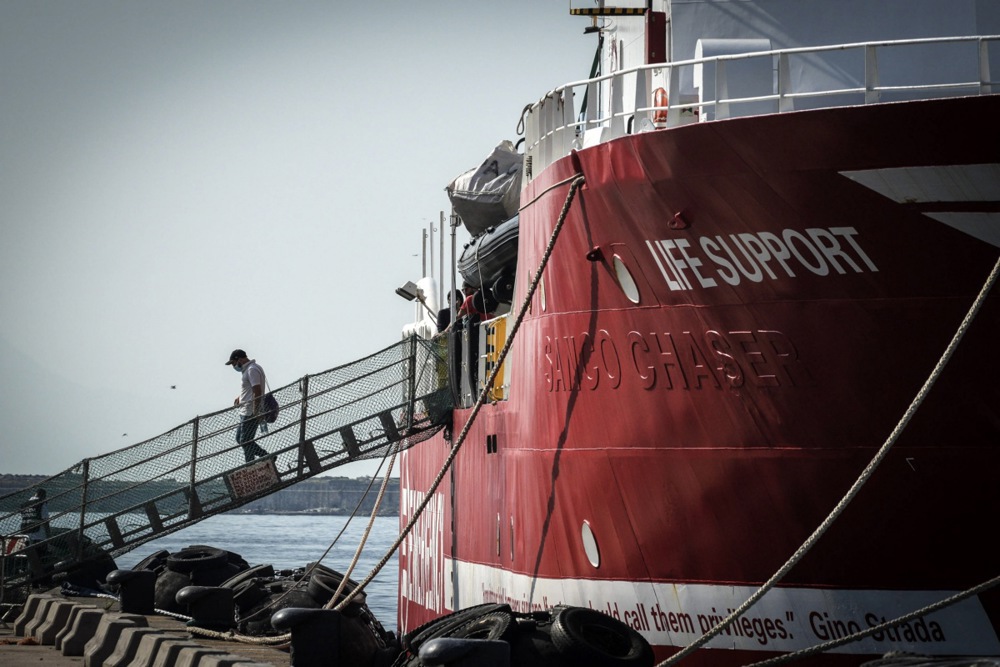The Italian Government has found itself scrambling to explain a sudden surge in migrant sea arrivals that appeared to upend earlier claims of successful migration control.
Despite interior minister Matteo Piantedosi boasting just weeks ago of a sharp drop in landings, April ended with 6,400 new migrant arrivals by sea—a 35 per cent increase compared to April 2024, when the total stood at 4,721, interior ministry figures showed on May 2.
The unexpected spike has effectively cancelled out the apparent decline seen in the first quarter of the year.
In the final week of April alone, more than 1,800 people reached Italian shores, tipping the balance for the entire year to date.
Total arrivals from January to April now stood at 15,543 — just shy of the 16,000 recorded in the same period last year.
Just two weeks prior to the new figures’ release, the government had claimed a 30 per cent reduction, attributing that to new international agreements and enhanced border enforcement.
On April 10, Piantedosi held a press conference showcasing what he described as the effectiveness of diplomatic efforts, especially with North African countries.
He celebrated a 30 per cent year-on-year decrease and referenced a 60 per cent drop in 2023 as proof that bilateral and multilateral deals were paying off.
Opposition parties have accused the government of premature triumphalism and a failure to present a long-term structural plan.
Critics on the Left, in particular, have highlighted the limits of relying on agreements with third countries — many of which have been condemned by rights groups for humanitarian abuses and systemic failings, Italian newspaper Ultima Voce reported recently.
Behind April’s rise lay a renewed flow of departures from North Africa, especially Tunisia and Libya.
Despite financial and political backing from the European Union and Italy to bolster coastal surveillance and migrant management in Tunisia, the North African country has remained a primary departure point.
Observers said the promised improvements had yet to materialise and humanitarian safeguards remained lacking.
Libya continued to be a major element of the central Mediterranean route, largely outside effective State control.
Smuggling networks have thrived in the country’s ongoing power vacuum, while migrants — mainly from sub-Saharan Africa — have paid thousands of euros for the transit through, often under horrific conditions, still hoping to reach European soil despite the known dangers of their trips.
Experts suggested that the downturn in early 2025 was likely due to unfavourable winter weather and a temporary lull in departures rather than a lasting shift.
For the Italian Government, the abrupt rebound in April has proved politically awkward.
At the EU level, the recently approved Pact on Migration and Asylum aimed to introduce firmer burden-sharing rules but implementation of it will take time.
For now, Italy remained disproportionately exposed along the front line of the Mediterranean migration route.
Bangladeshis continued to make up the largest group, with nearly 5,800 arrivals. The biggest shift came from Eritrea: 1,748 Eritreans landed by the end of April — more than triple the figure recorded a month earlier.
Pakistan, Egypt, Syria, Ethiopia, Sudan, Somalia, Tunisia and Mali followed in the ranking of countries of origin.
Illustrating the issue, over the span of just 24 hours, more than 770 migrants landed on the Italian island of Lampedusa around Labour Day on May 1, marking another sharp spike in arrivals.
Italy’s main facility on the island is again nearing capacity, now hosting almost 900 migrants after another 299 were transferred to the mainland by ferry.





